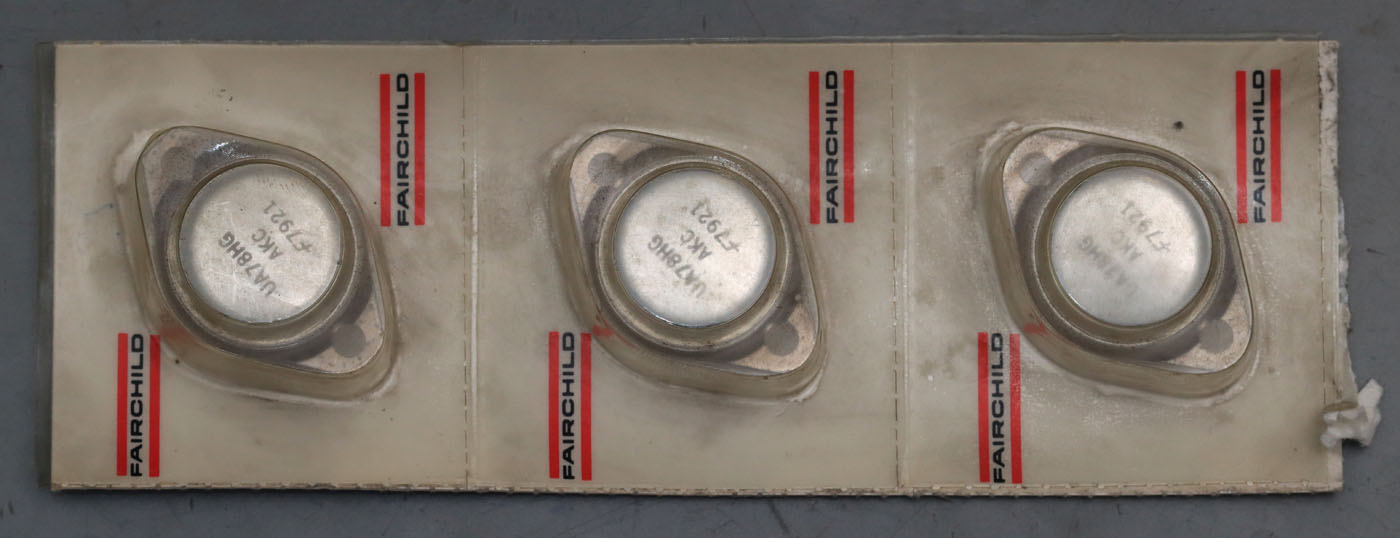
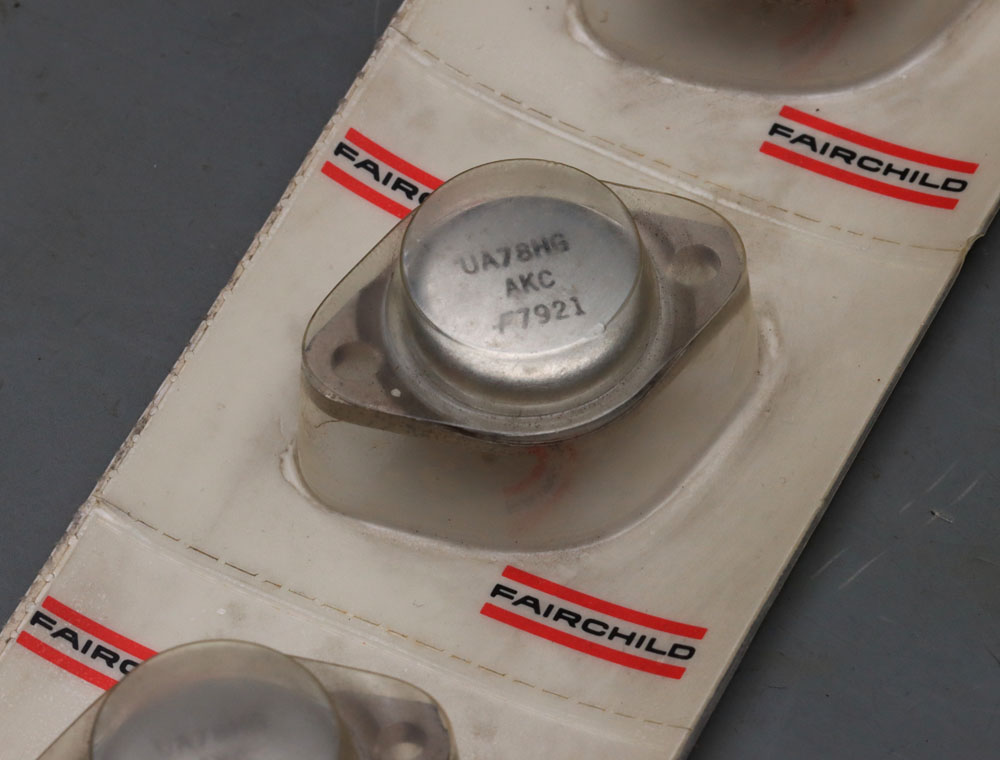
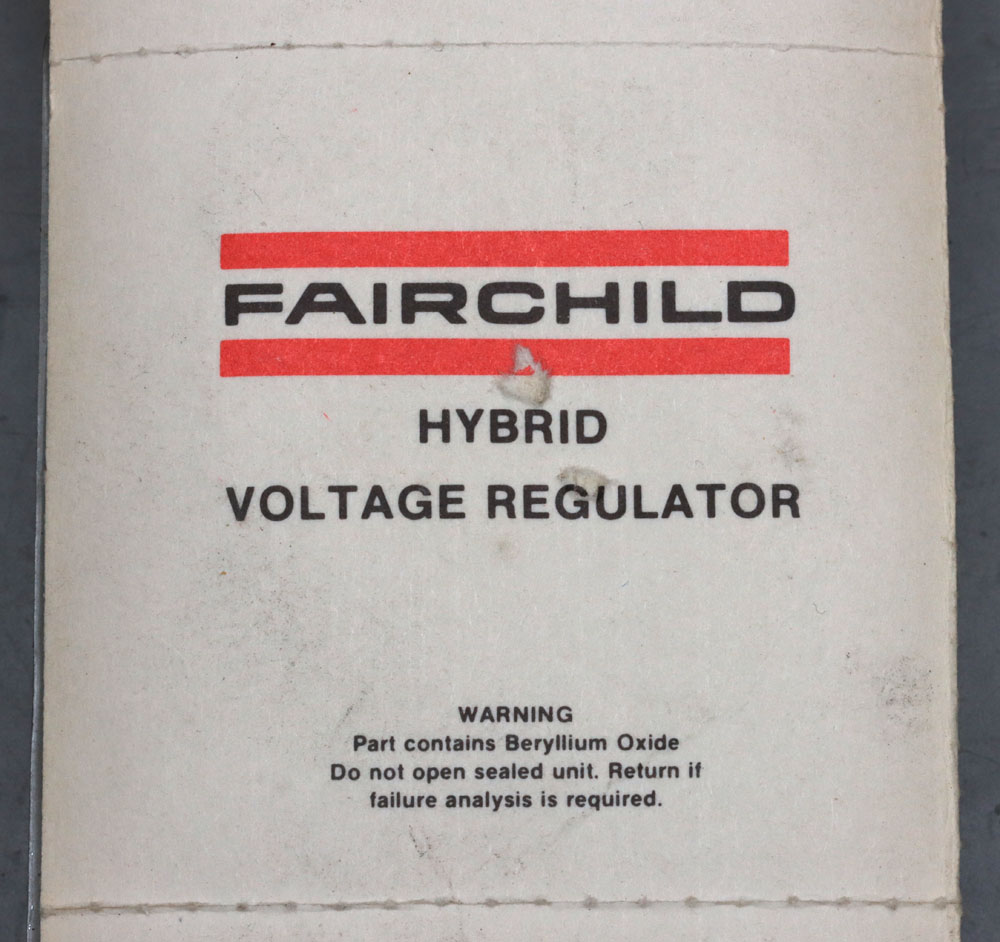
The Fairchild µA78HG voltage regulator is shown here in the original packaging. The H in the designation shows that it is a hybrid component. There is a note on the back that the package contains beryllium oxide and that the voltage regulator should therefore be returned to Fairchild for fault analysis.
With an input voltage of up to 40V, the output voltage of the µA78HG can be set between 5V and 24V via a voltage divider. The output current is specified with a maximum of 5A. The short-circuit protection typically kicks in at 7A. Up to 50W can be dissipated.
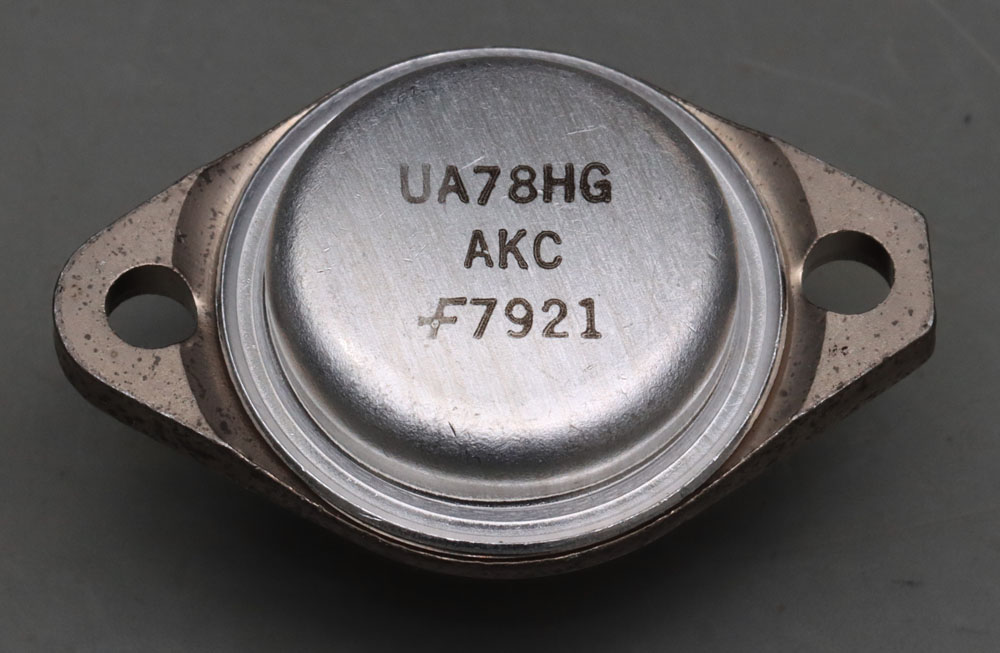
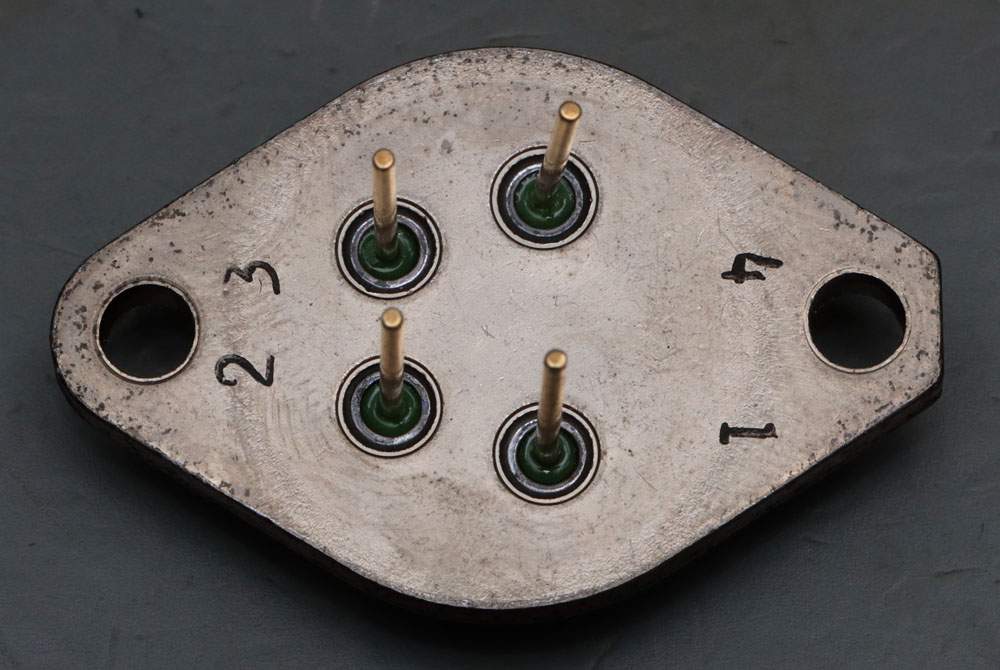
The µA78HG is housed in a TO-3 package. This is the historical widespread variant with a very thick base plate. As the component has four potentials to the outside, the TO-3 variant with four pins was selected. Numbers help to identify the pins. The base plate is flattened on one side so it´s easier to mount the regulator in the right orientation.
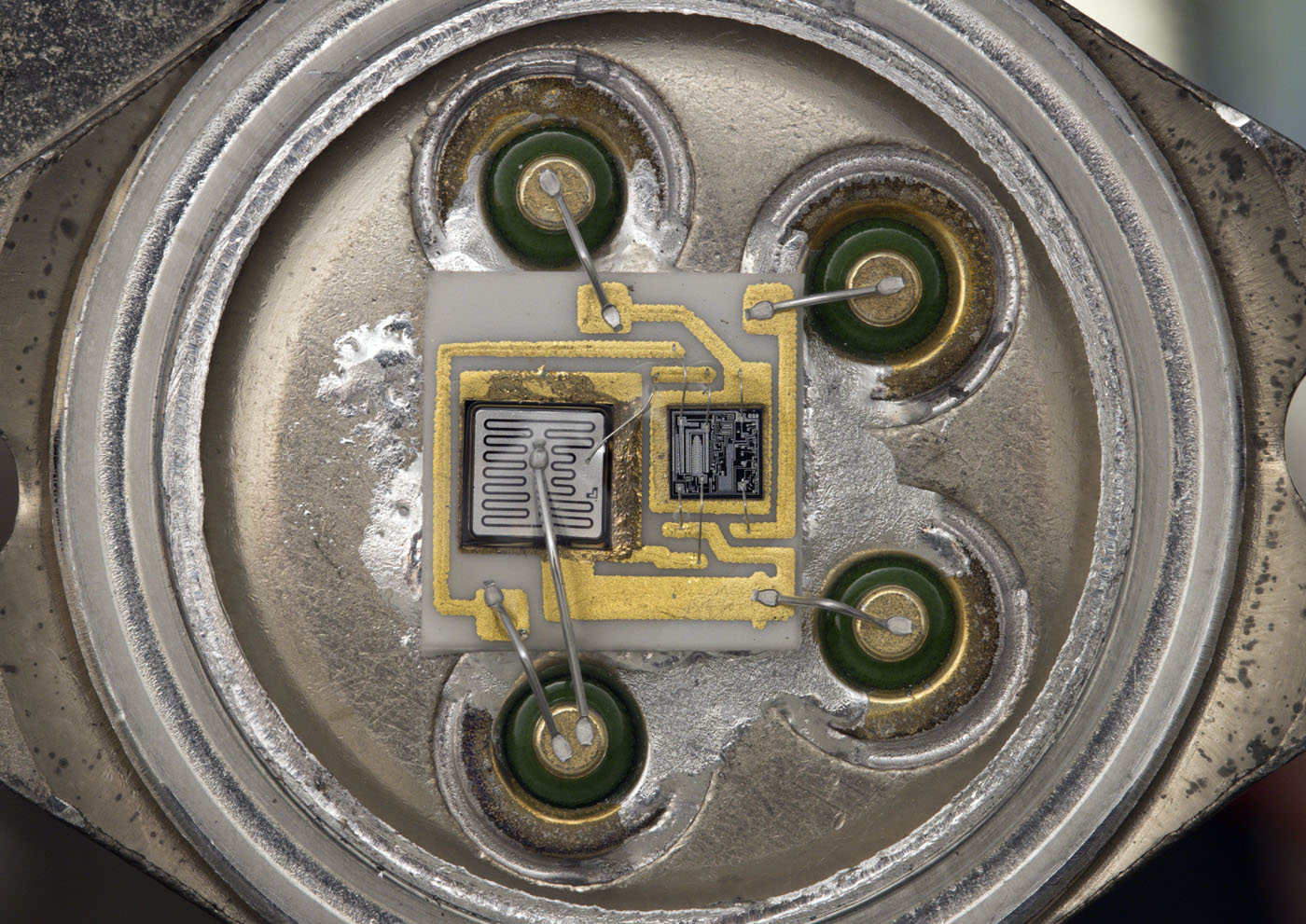
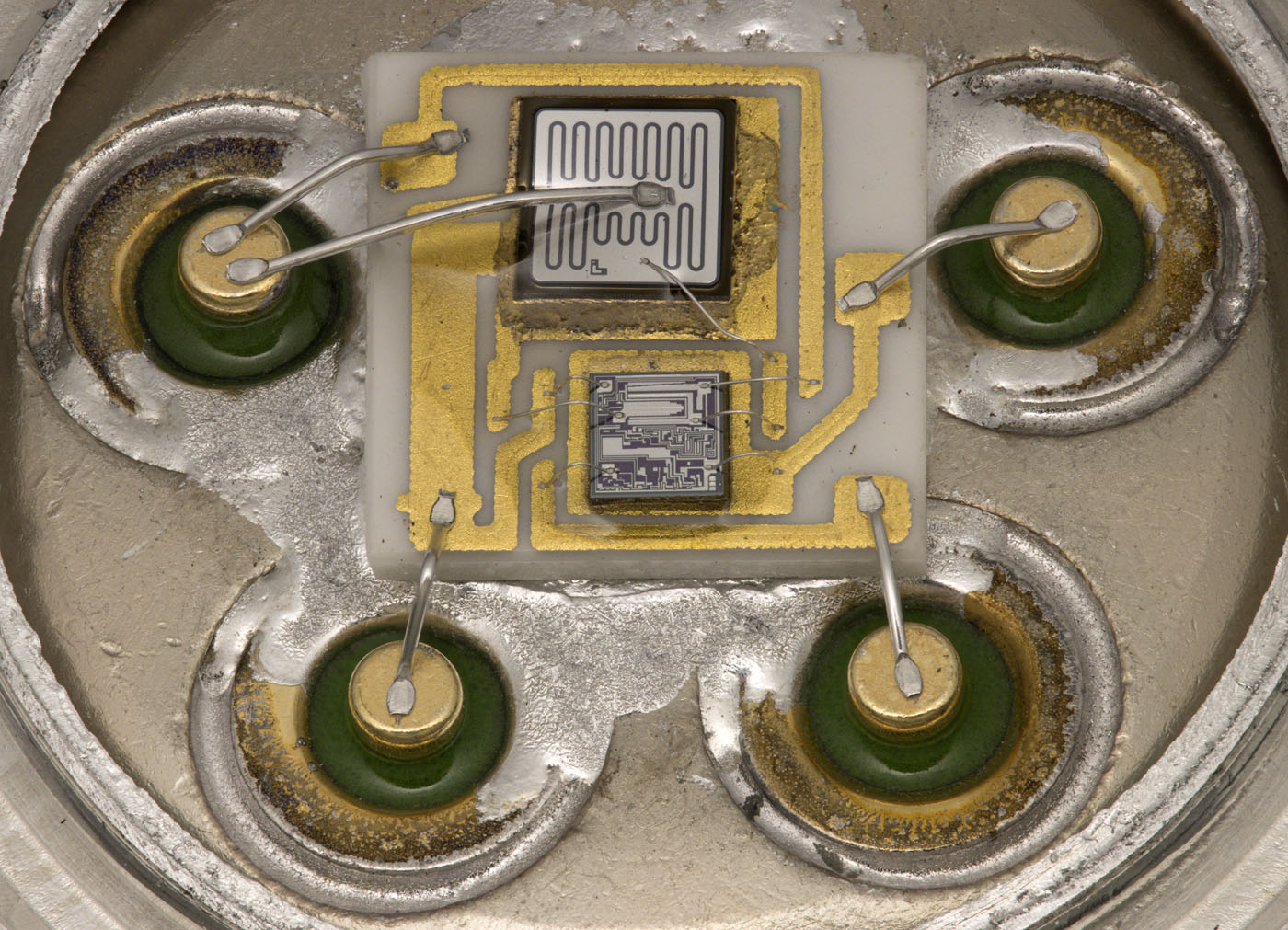
The housing contains a ceramic carrier on which an integrated circuit and a power transistor are placed. A clear encapsulation protects the semiconductors.
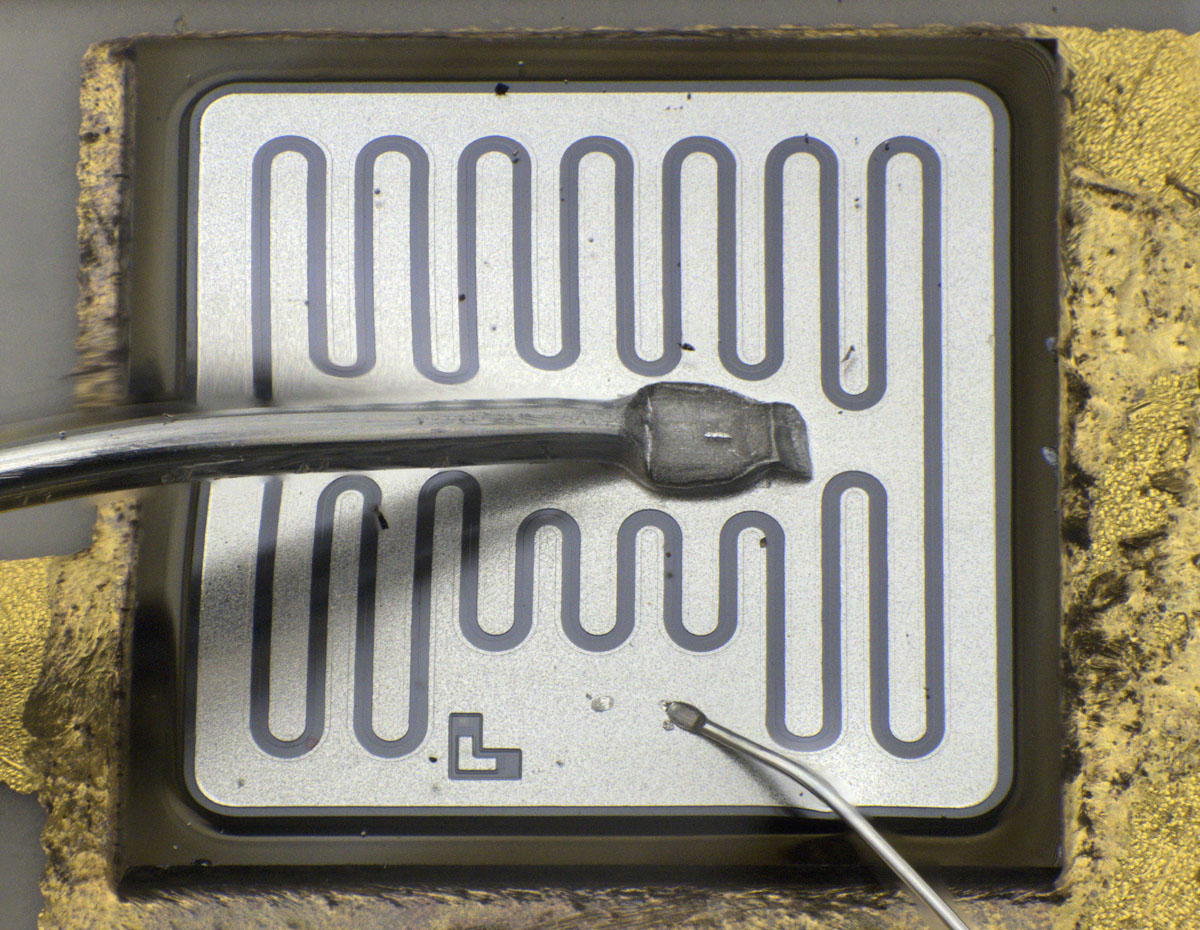
The transistor has a MESA structure. The edge length is 3,0 mm. The thick bondwire conducts the supply potential coming from the left hand side. The base area is contacted with a thin bondwire. The fact that the supply potential contacts the emitter area shows that it is a PNP transistor.
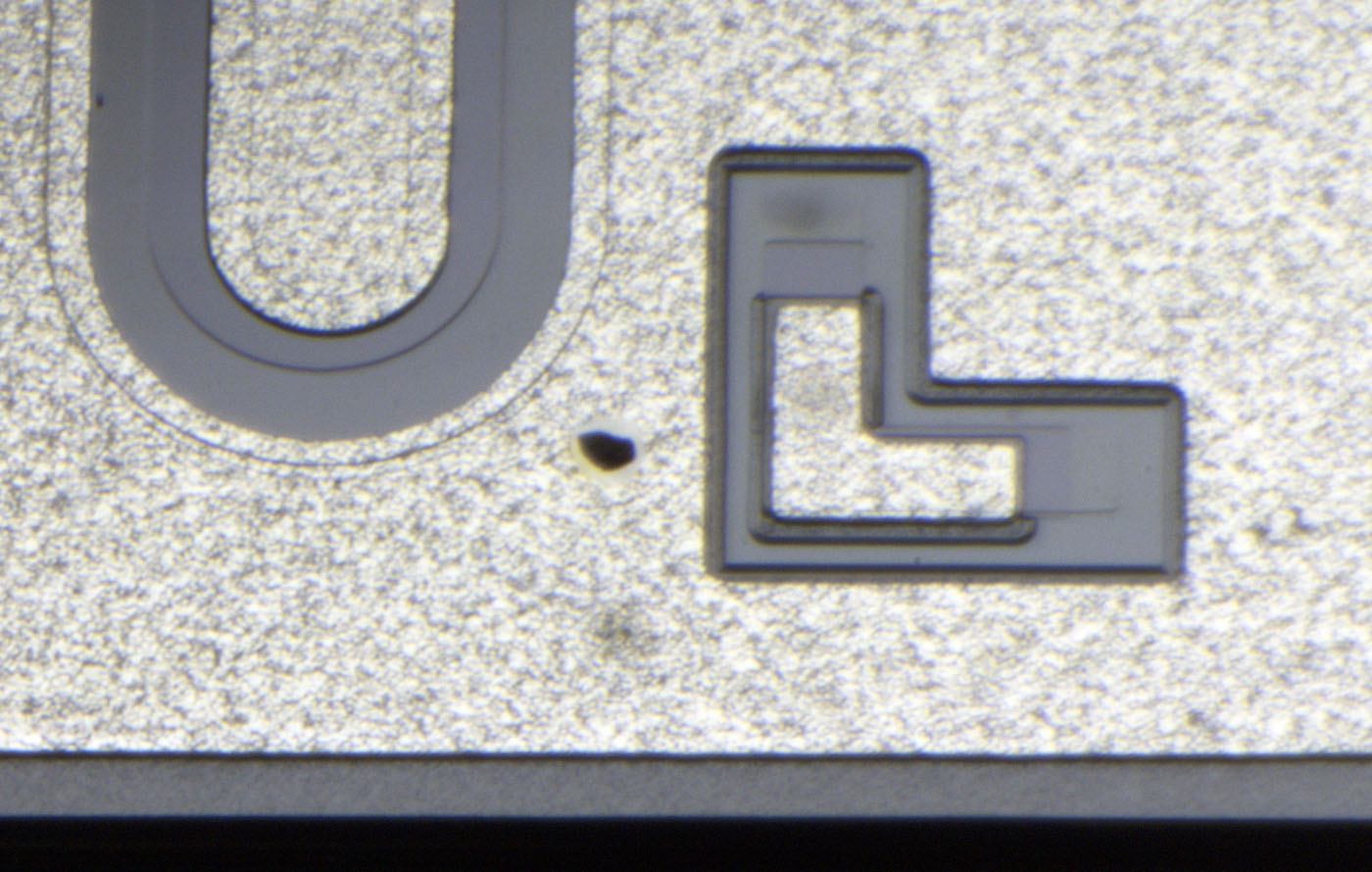
There is an L-shaped structure on the lower edge. This can be used to check how well the masks were aligned during production.
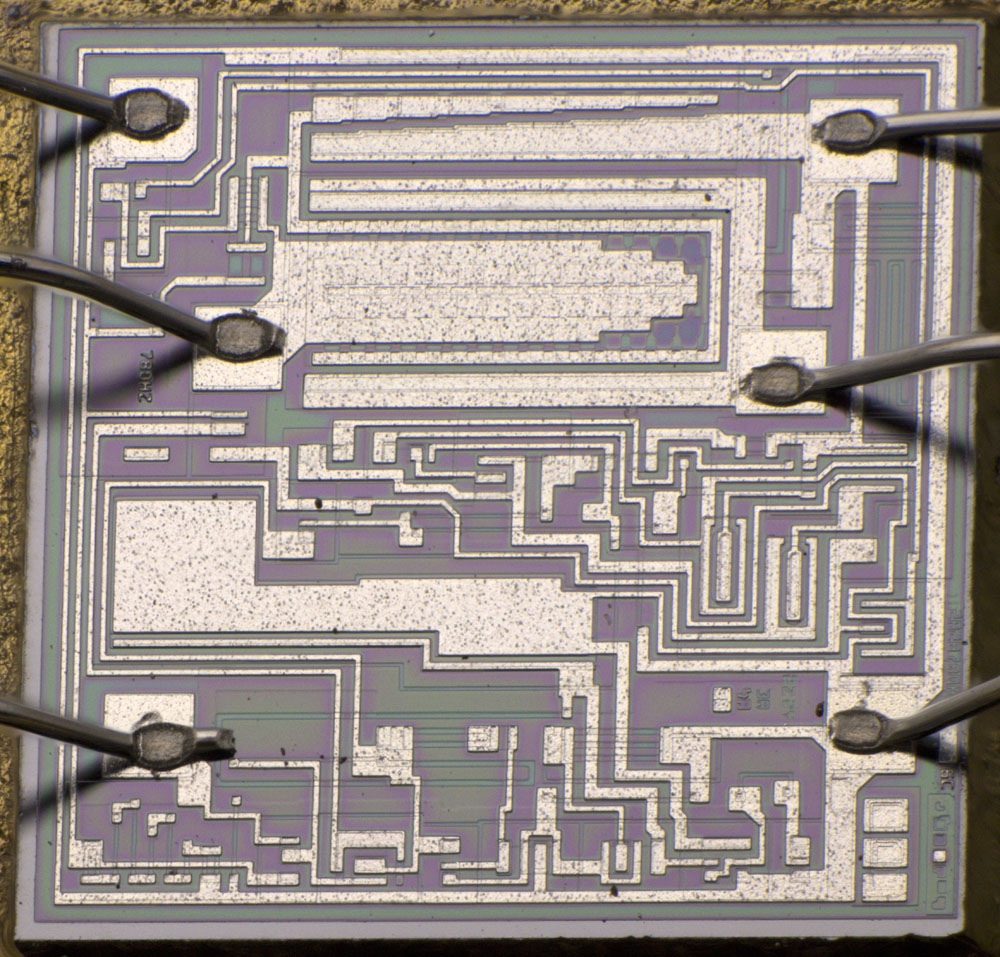
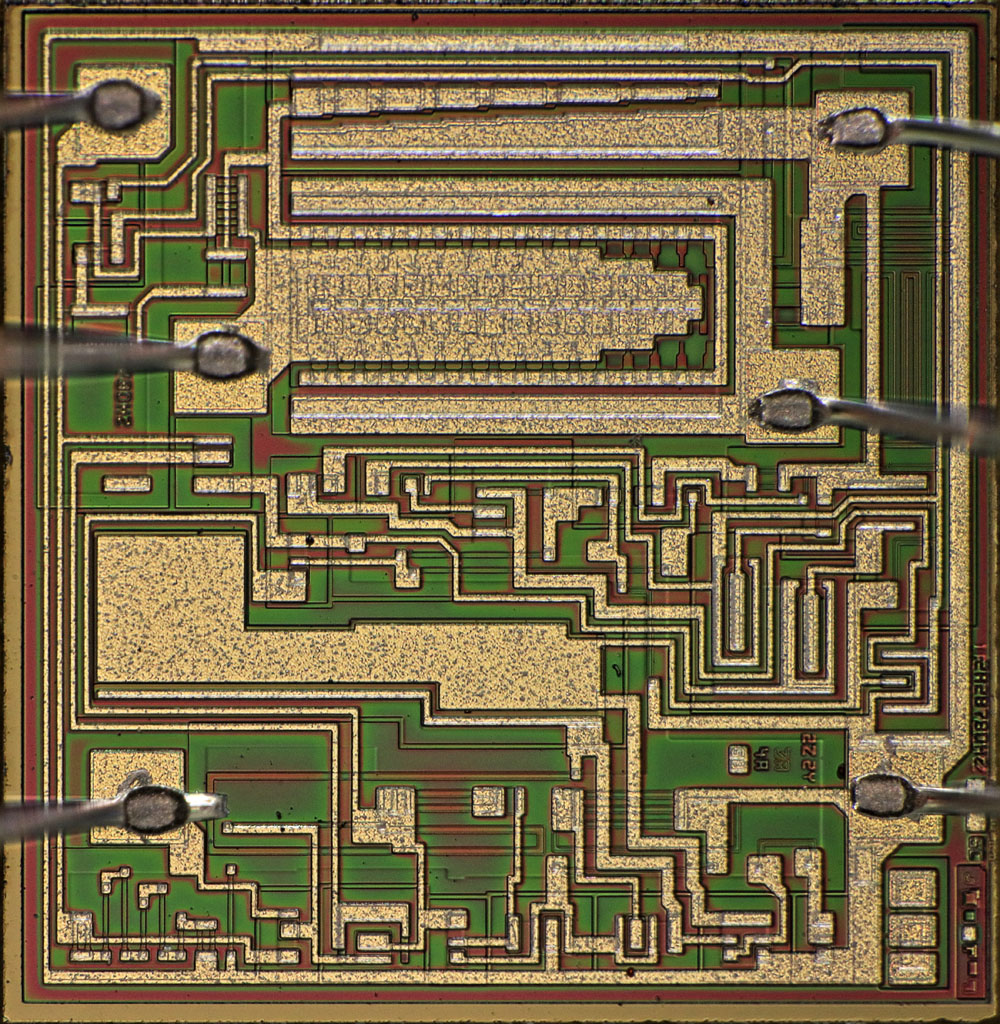
The integrated circuit contains the regulator. The dimensions of the die are 1,8mm x 1,9mm.
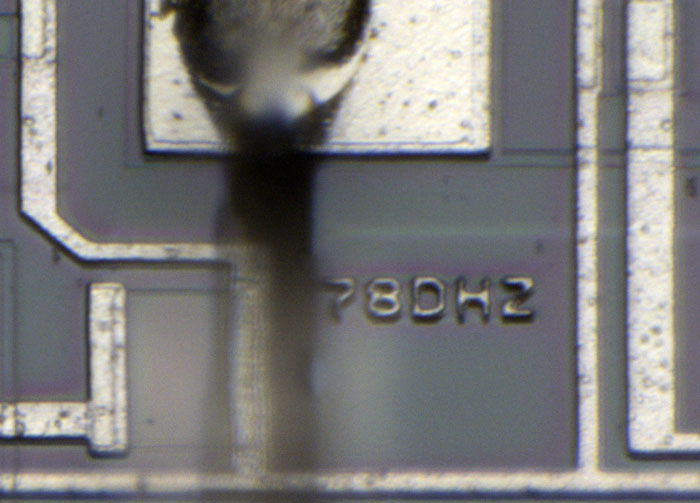
The designation 78DHZ is shown in the metal layer on the left side of the die.
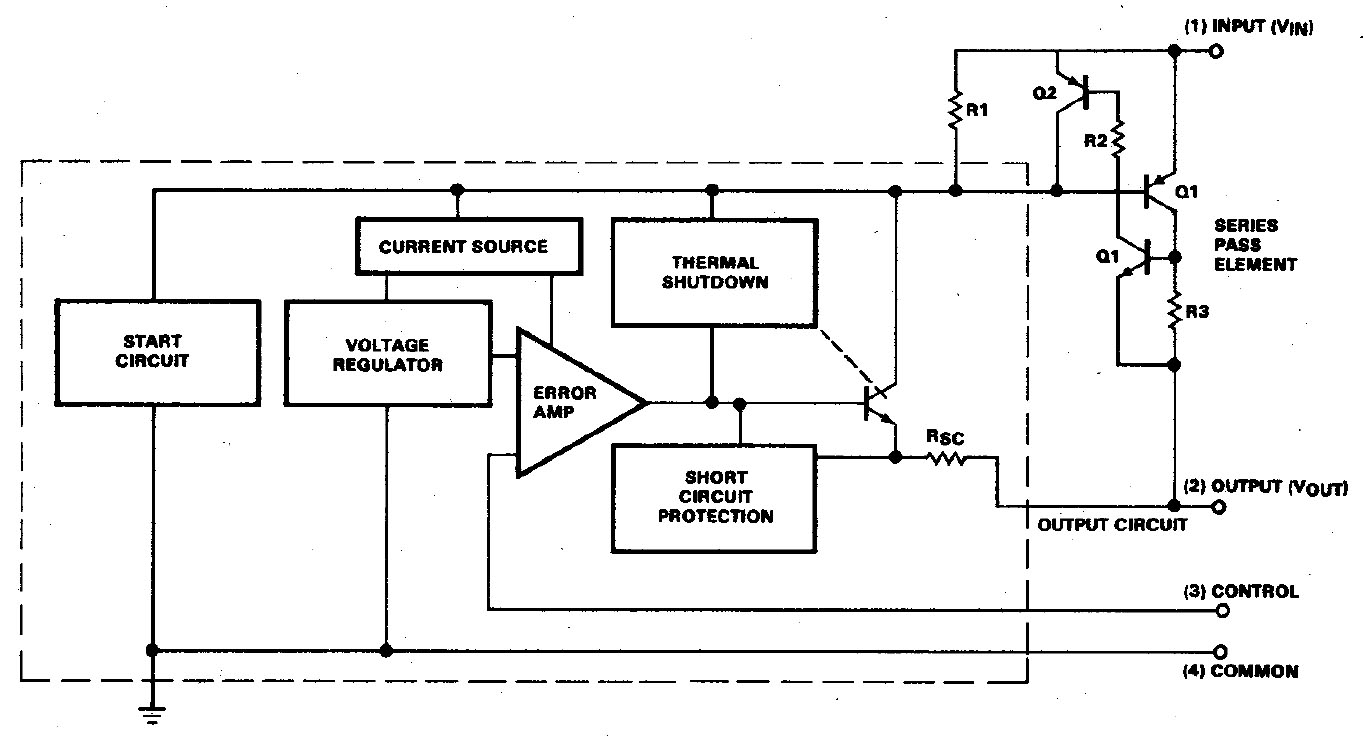
The Fairchild Voltage Regulator Handbook from 1978 contains a block diagram for the µA78HG. The integrated part is labelled as µA78M00. The µA78M00 itself is already a complete voltage regulator. The external elements merely extend the current carrying capability and realise overcurrent protection in this path.
As will be shown later, the representation of the external component does not match the µA78HG documented here. The series regulator transistor and its shunt are actually external. However, the µA78M00 is responsible for detecting and switching off the overcurrent. For this just a small modification of the metal layer was necessary. Perhaps there was an earlier revision in which the µA78M00 regulator was an unmodified voltage regulator and all the elements seen here had to be integrated externally.
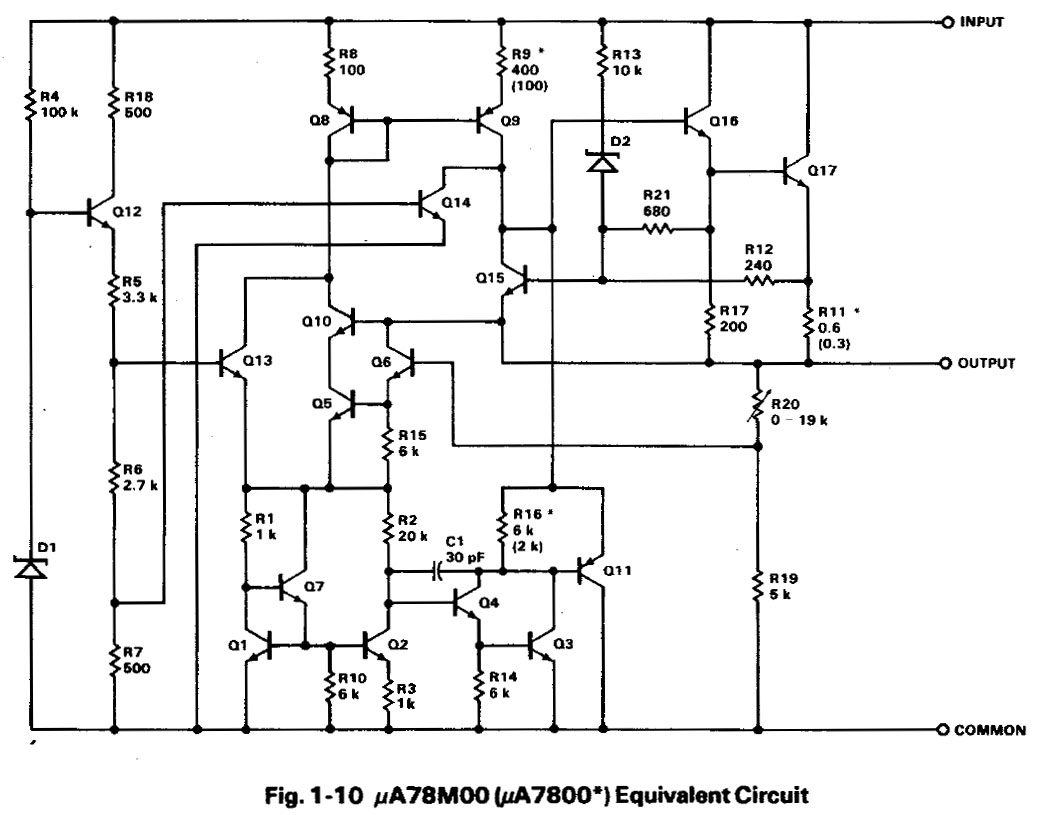
A detailed circuit diagram of the µA78M00 is also documented in the Fairchild Voltage Regulator Handbook. The Siemens TDB7805 has the same structure. The functionality of the circuit is described there in more detail (
https://www.richis-lab.de/voltageregulator05.htm). However, here a fixed-voltage version without the modification for use with an external series regulator is shown. A µA78M05 with an output voltage of 5V would look like this, for example. The voltage divider for the feedback is integrated in these regulators (R19/R20).
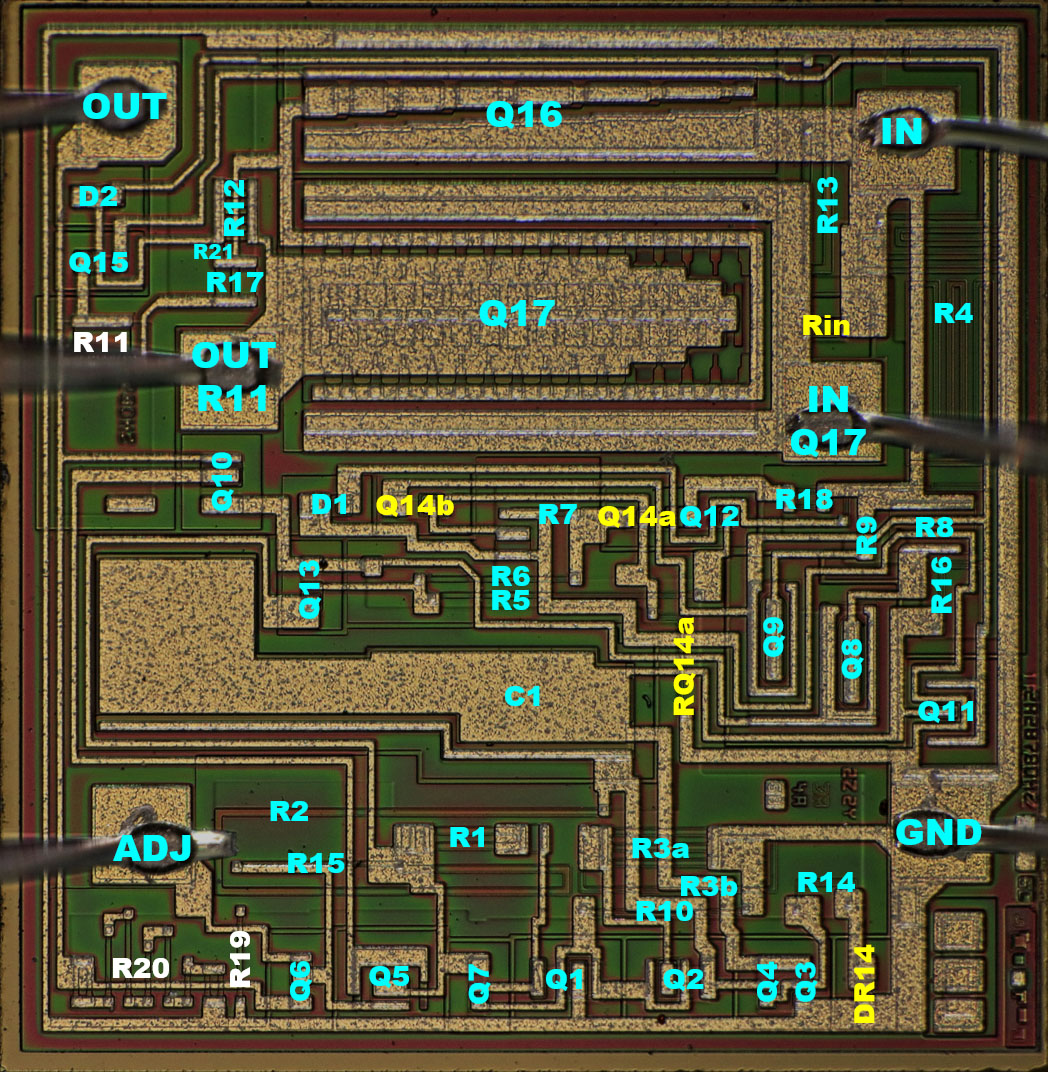
Most of the circuit can be found on the die. The transistor Q14, which represents the overtemperature protection, is designed as a Darlington pair. The DR14 diode can be found in the reference voltage path. This may have reduced the temperature drift even further.
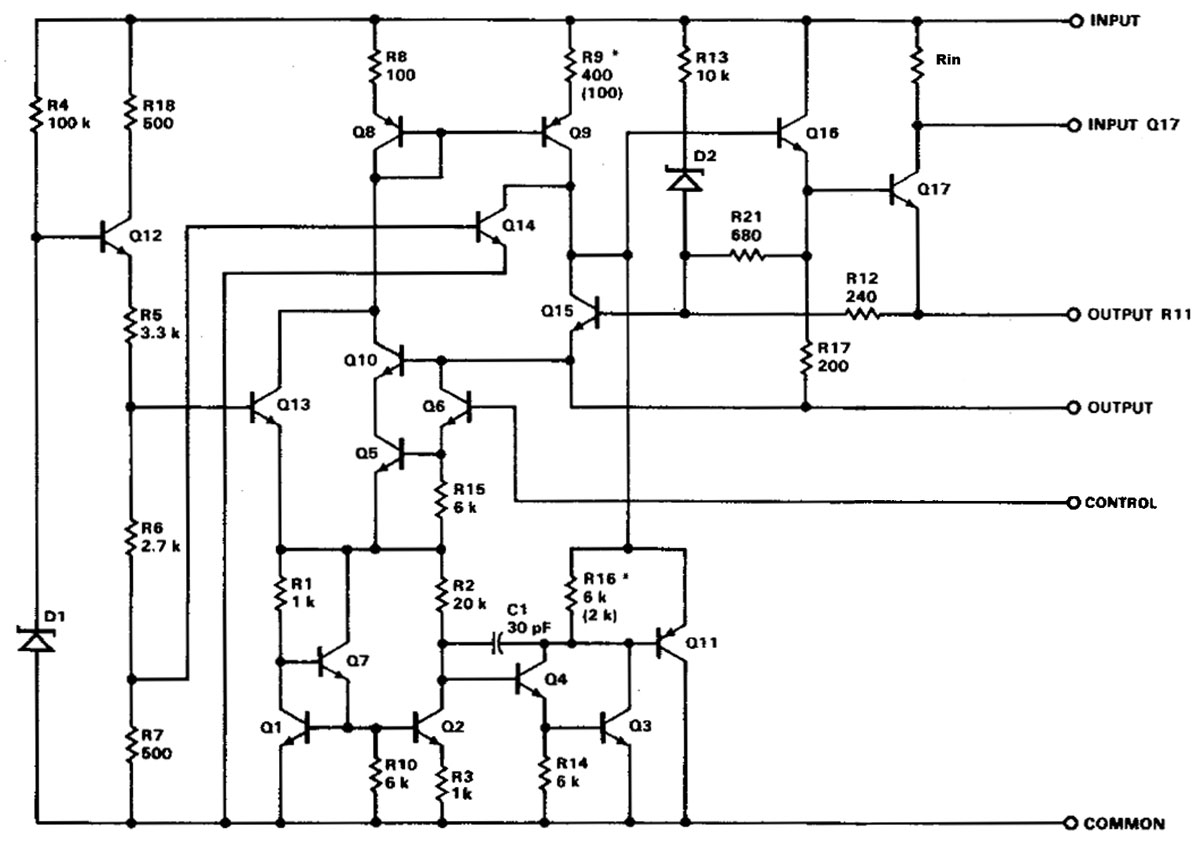
As already described, the µA78M00 has been modified for use with an external transistor. To make the differences clear, the circuit diagram from the Fairchild Voltage Regulator Handbook has been adapted accordingly. The control potential is brought out so that the output voltage can be set externally. The shunt R11 is missing, instead the potential Output R11 is led out, with which an external current limitation can be set up. In addition, the collector of transistor Q17 can be contacted exclusively. This transistor itself represents the series regulator in the original circuit. Isolated from the input voltage, however, it can also be used as a driver for a PNP transistor.
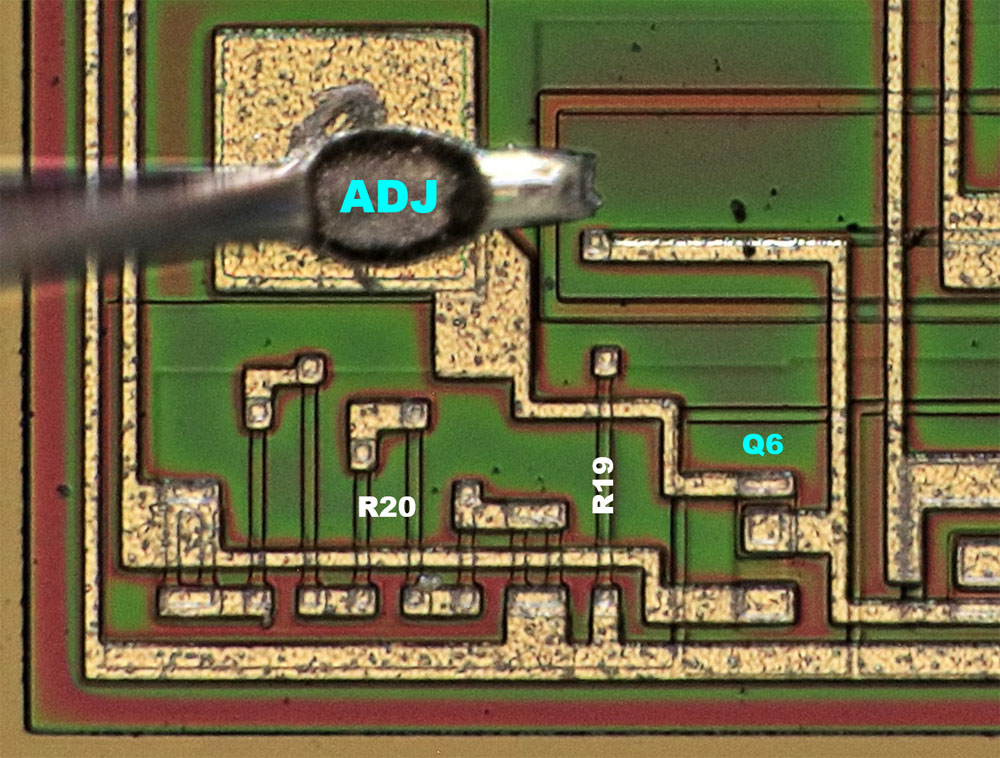
There are two resistors at the lower edge of the die, which can represent the voltage divider for the feedback as R19 and R20 in the fixed-voltage variants. R20 consists of several small elements so that the different output voltages can be set.
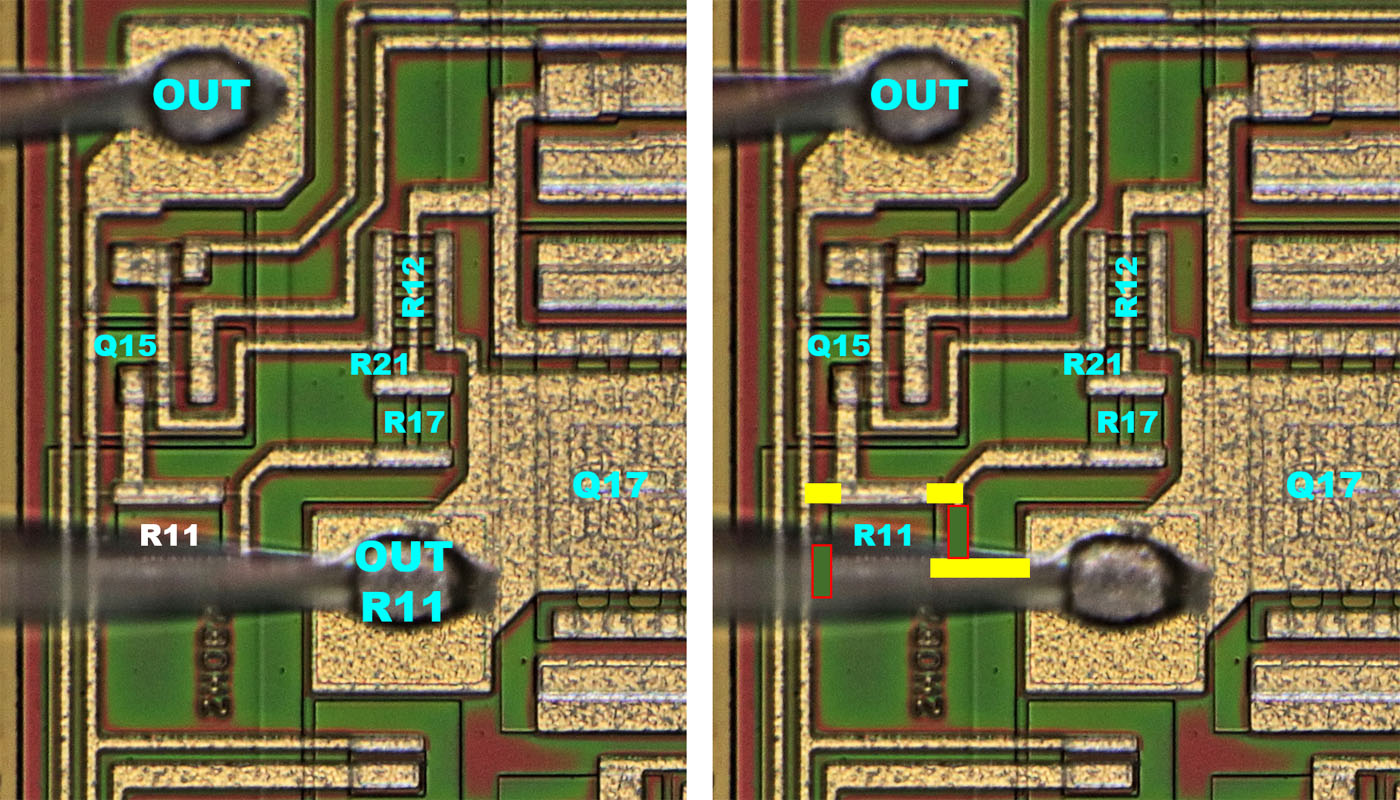
Changing the metal layer is sufficient to integrate the voltage divider for the output voltage into the circuit. The same applies to the integrated series regulator and the shunt R11. In the µA78HG (left), R11 is wired as the emitter resistor of Q15. Its influence in the circuit should not be too great. For applications without an external control transistor, R11 can be integrated as a shunt by making small changes to the metal layer (right). The bondpad OUT R11 is then no longer used. The line to the upper bondpad appears very thin for the output current of 500mA. It may need to be widened to the left. The adjacent GND line is redundant.
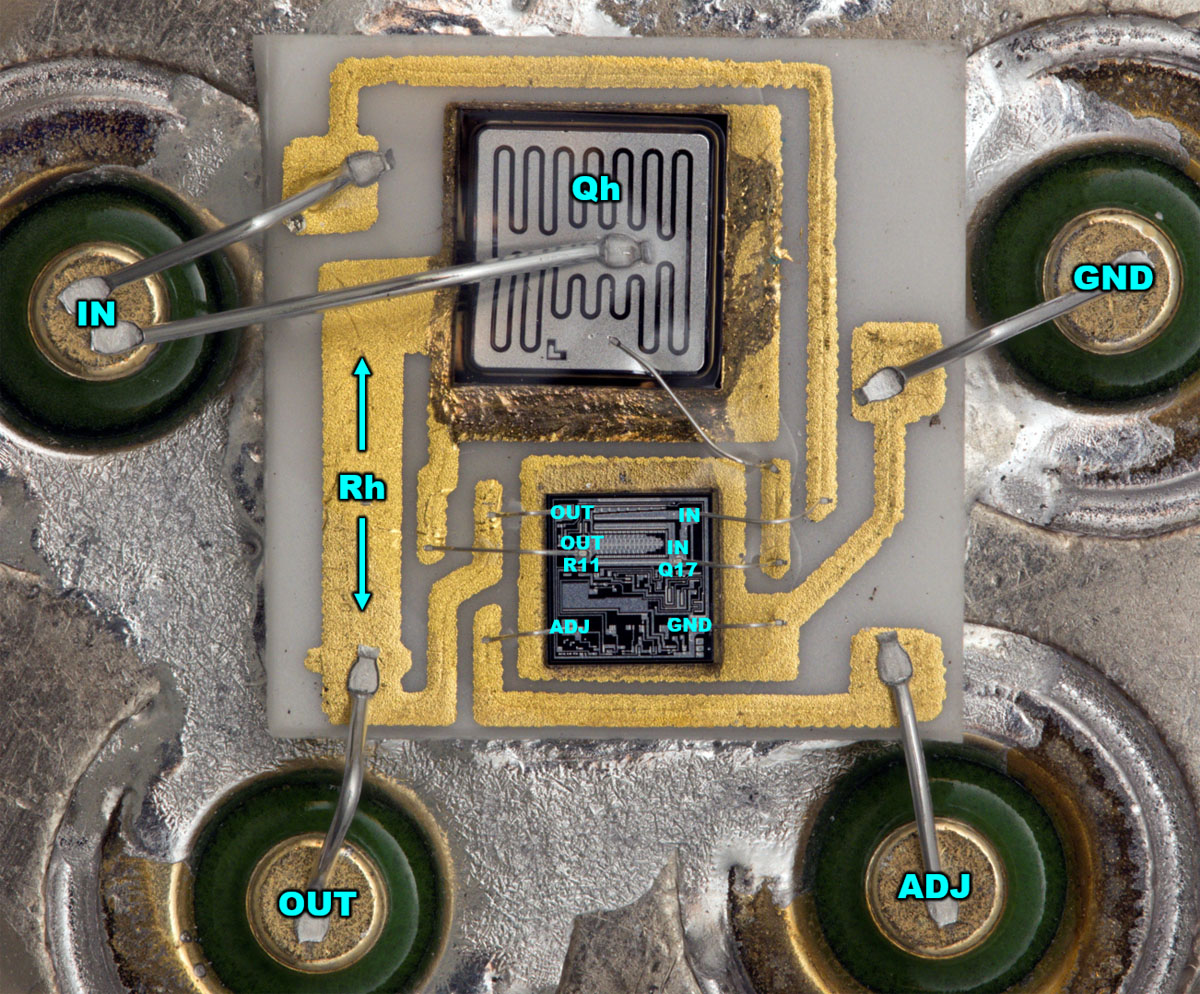
There is a line on the ceramic carrier that serves as the shunt resistor Rh for overcurrent protection.
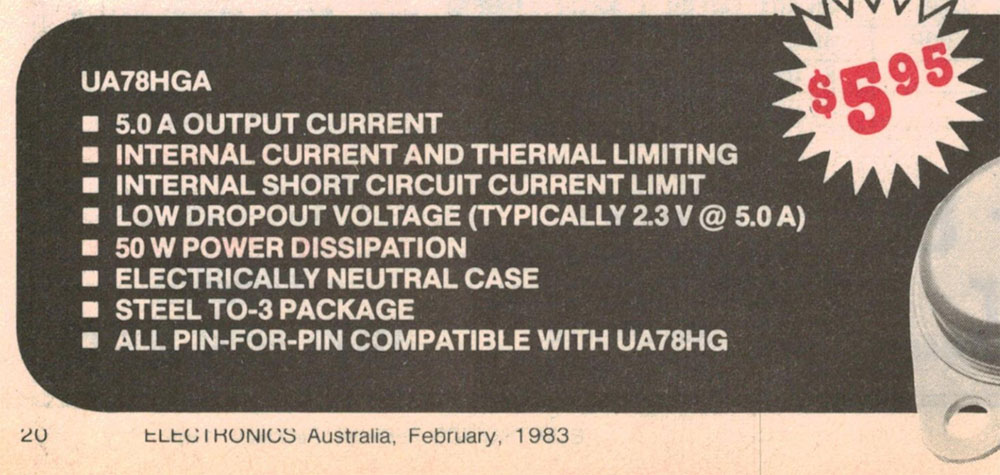
Somewhat later, another variant of the voltage regulator was introduced with the designation µA78HGA. This does not appear to be just a bin. The A variant is explicitly advertised as pin-compatible.
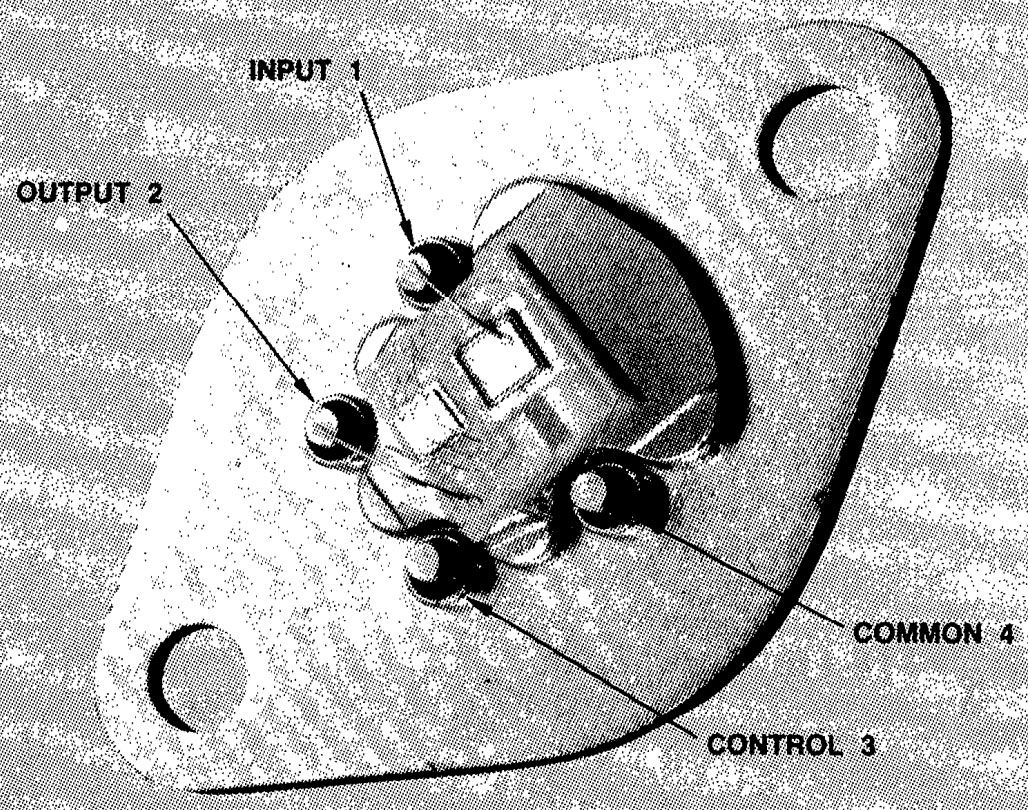
The µA78HGA datasheet shows a photo of the internal structure. The quality of the photo is very poor, but it appears to show a different structure compared to the regulator shown here. However, it does not necessarily have to be the A variant. It is also conceivable that the picture is just an example and that the first revision with the external current limiter is shown.
https://www.richis-lab.de/voltageregulator24.htm 